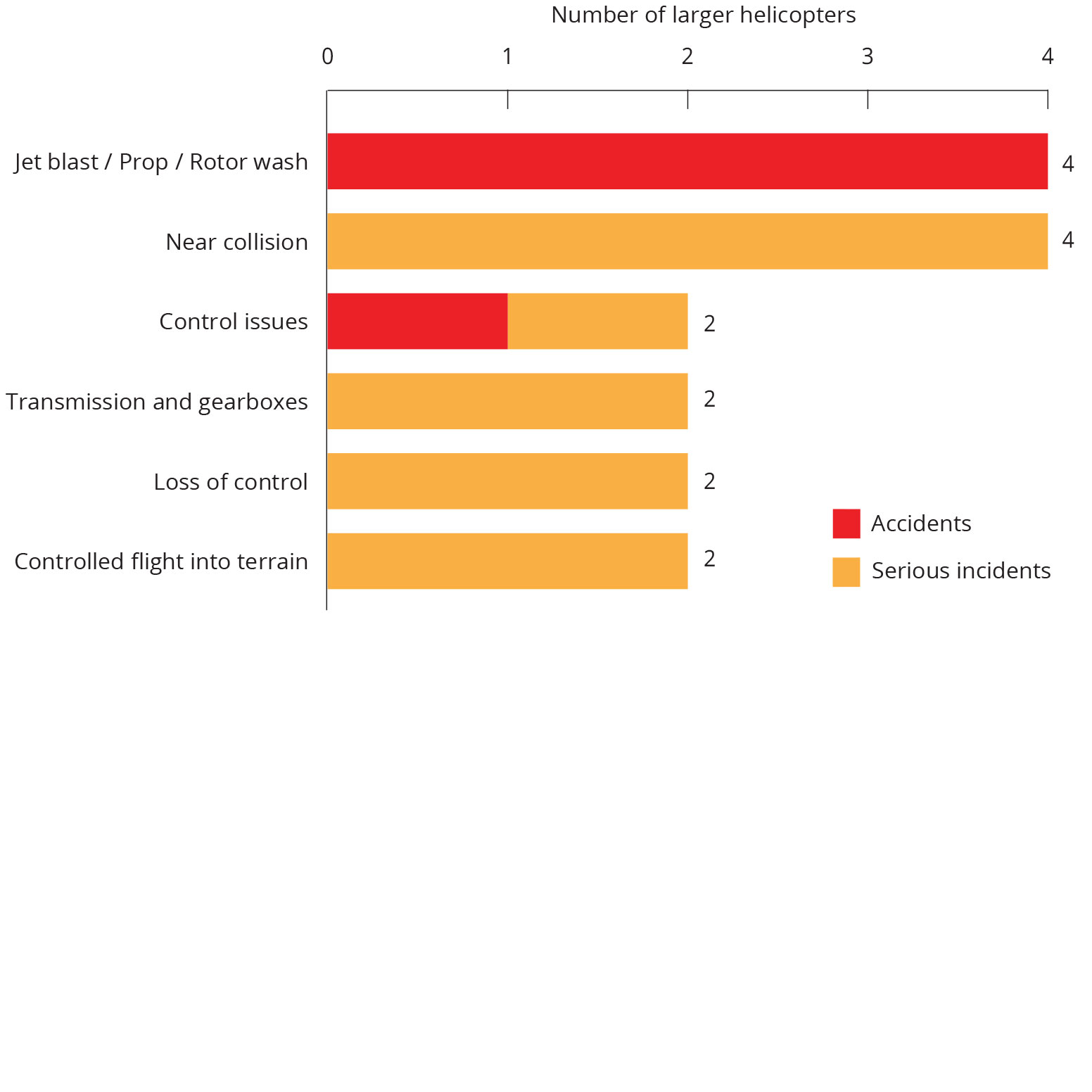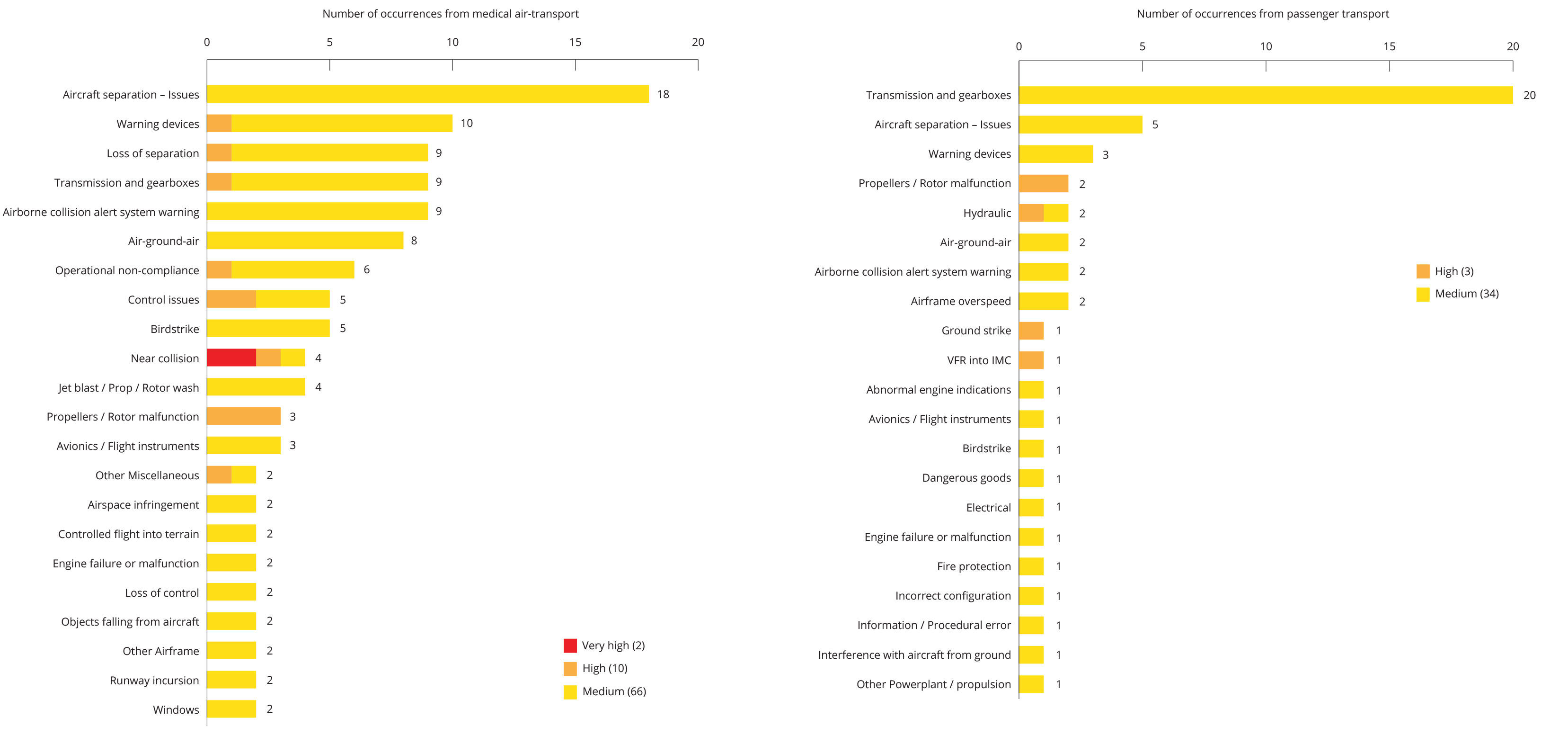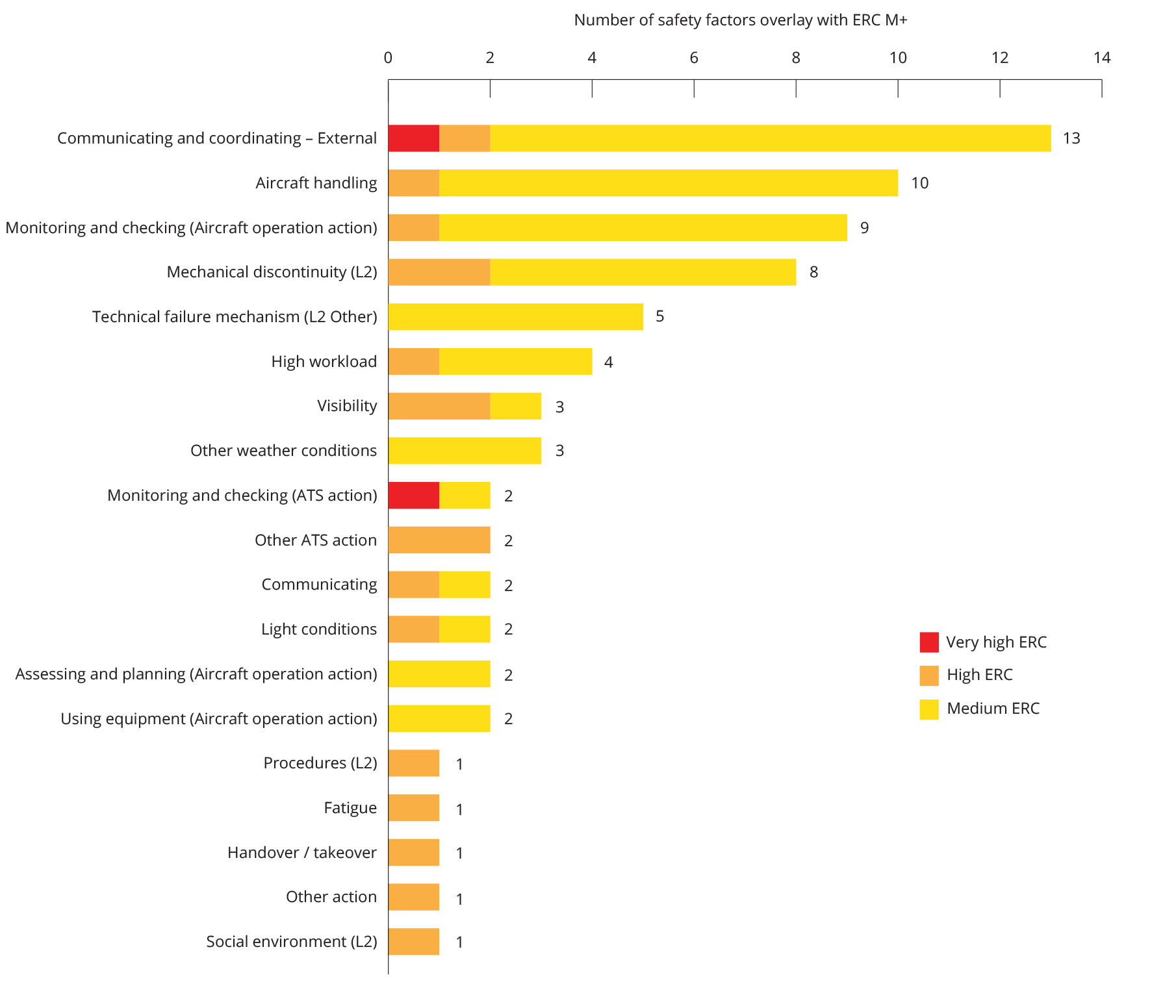Analysis of occurrence types showed the most common occurrence type for accidents and serious incidents in medical transport were:
- rotor wash (4 accidents)
- near collision (4 serious incidents)
- control issues (1 accident, 1 serious incident).
For incidents from medical transport, the top 3 taxonomy were:
- birdstrike (22.9%)
- warning devices (13.2%)
- aircraft separation Issues (6.2%).
Since this SSRP workshop, the Australian Transport Safety Bureau (ATSB) released a paper on Downwash incidents at hospital helicopter landing sites.
ATSB developed the report after several rotor wash incidents at helicopter landing sites (HLS). Some of which resulted in injuries to pedestrians located within the vicinity of the HLS.
The report notes that before operators began using AW139 for medical transport operations there were no reported occurrences of rotor wash related injuries at hospital HLS.
The ATSB has issued Safety Advisory Notice (AD-2022-001-SAN-001) with the final report. In the report they state:
encouraging operators of hospital helicopter landing sites, and helicopter medical transport operators using those landing sites, work together to review the adequacy of existing risk controls to ensure pedestrians are adequately protected from the increased rotor wash associated with larger helicopters.
For occurrences from passenger transport helicopters, the top 3 taxonomy were Warning Devices (20.2%), Avionics/ Flight Instruments (16.9%) and Abnormal Engine Indications (12.1%).
Occurrence types – event risk classification
Analysing ATSB’s event risk classification (ERC) for occurrences in the sector helps to gain further clarity on the sector risk. Approximately 24% of Medical Transport occurrences have an ERC of medium or greater, while only about 9% for non-scheduled large passenger. ERC analysis shows higher safety risk from occurrences related to airspace conflicts such as near collision.
Based on ERC classification:
- The annual number of medium ERC occurrences for medical transport is increasing, while Passenger Transport is trending down.
- For medical transport the top 3 occurrence taxonomies are: Aircraft separation issues, Warning devices, and Loss of separation.
- For larger passenger transport, the top 3 occurrence taxonomies are: Transmission and gearboxes, Aircraft separation issues, and Warning devices.
Safety factors
ATSB applies safety factors to certain occurrences to identify underlying conditions or factors that contributed to the occurrence. Safety factors are an event or condition that increases safety risks. This means it increases the likelihood of an occurrence or the consequences associated with an occurrence.
Approximately 25% of occurrences in the larger non-scheduled helicopter operations have safety factors assigned by the ATSB. The most frequent safety factors taking into account a medium or greater ERC between 2014 and 2021 were:
- communicating and coordinating - external
- monitoring and checking (aircraft operation action)
- mechanical discontinuity.





